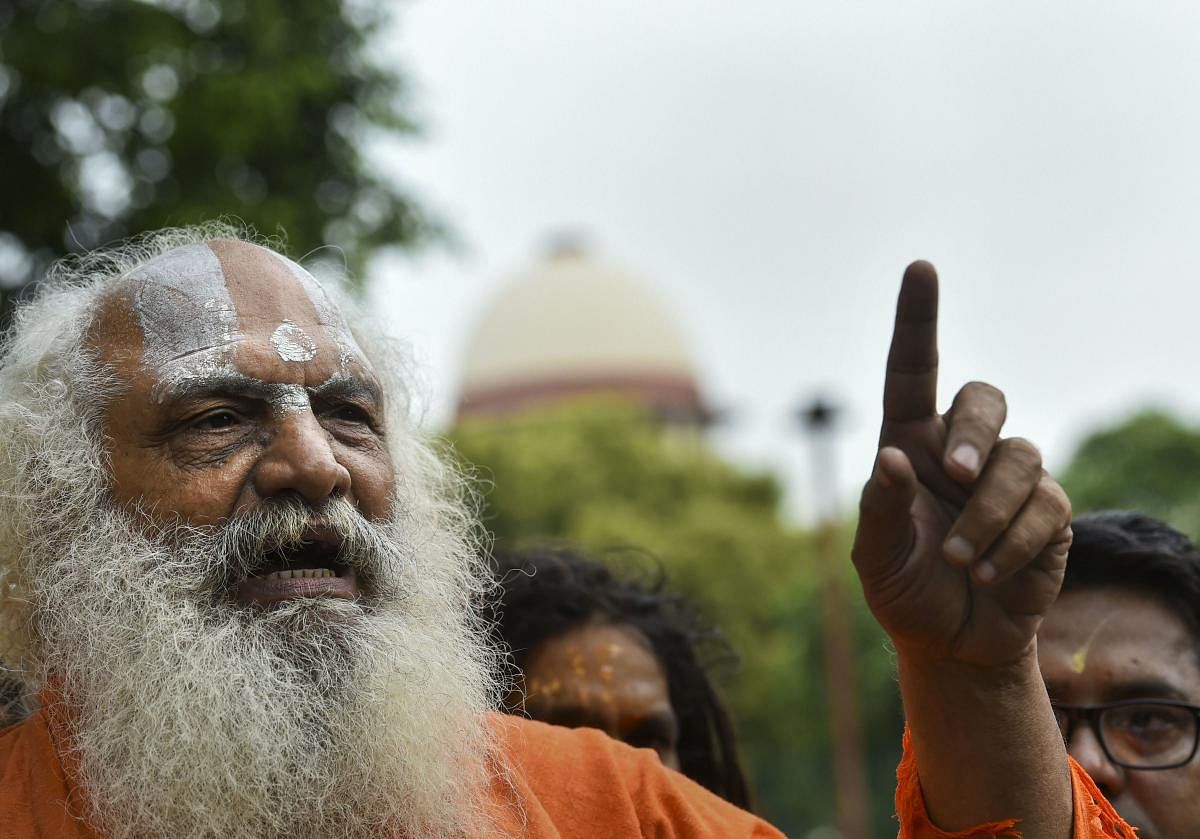
One of the Hindu parties on Tuesday told the Supreme Court that it has been in possession of the inner courtyard and birthplace of Lord Ram for hundreds of years and was thus entitled to possess and manage the site in Ayodhya.
Seeking control of the entire 2.77 acre of disputed land in Ayodhya, Nirmohi Akhara, one of the plaintiffs, argued before the Constitution bench presided over by Chief Justice Ranjan Gogoi that Muslims have not offered prayers since 1934 and abandoned the place called as Babri Masjid completely in 1949.
“We are a registered body. Our suit is basically for belongings, possession and management rights of Ram Janmasthan. The Nirmohi Akhara was in possession of the inner courtyard and Ram Janmasthan for hundreds of years. Outer courtyard having Sita Rasoi, Chabutra, Bhandar Grah were also in our possession and it was never a part of dispute in any case,” senior advocate Sushil Kumar Jain argued.
He said the Akhara continued to perform sacred rites in the place which was demolished on December 6, 1992. He pointed out that the case was filed by the Nirmohi Akhara in 1959 after “illegal attachment orders” while the Sunni Waqf Board filed its suit in 1969.
The bench began hearing the day-to-day arguments in the batch of appeals filed against the 2010 Allahabad High Court's judgement, which ordered for three-part-division of the place, giving one portion to Nirmohi Akhara.
The court, at the outset, rejected a plea of former RSS ideologue K N Govindacharya for the recording of the proceedings in the case.
During the hearing, the court, which asked Akhara's counsel to confine his arguments to civil dispute and skip reading some written statements, was interjected by senior advocate Rajeev Dhavan who said perhaps there would not be any curtailment of arguments.
The CJI said that there should not be any doubt in anybody's mind. On this, Dhavan said he hoped so. This was objected to by the CJI who asked him to keep the decorum being an officer of the court.
